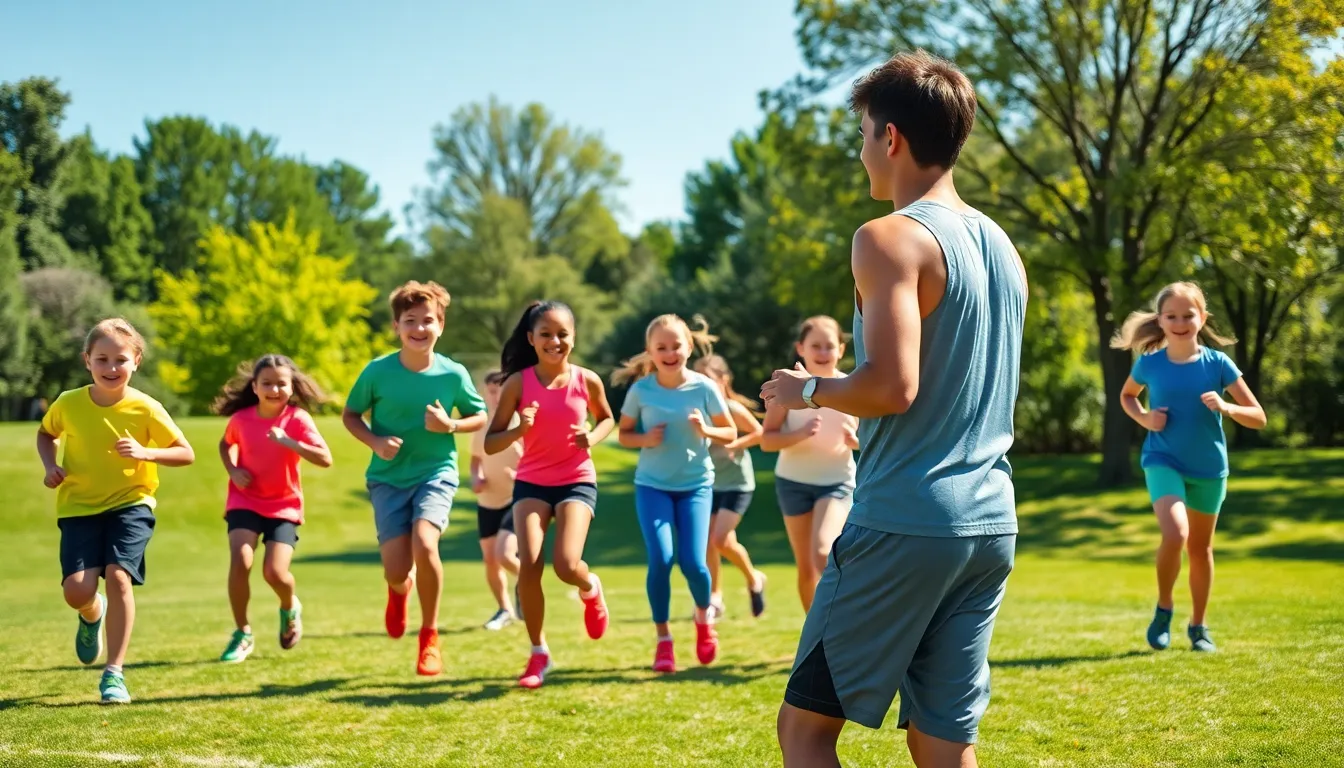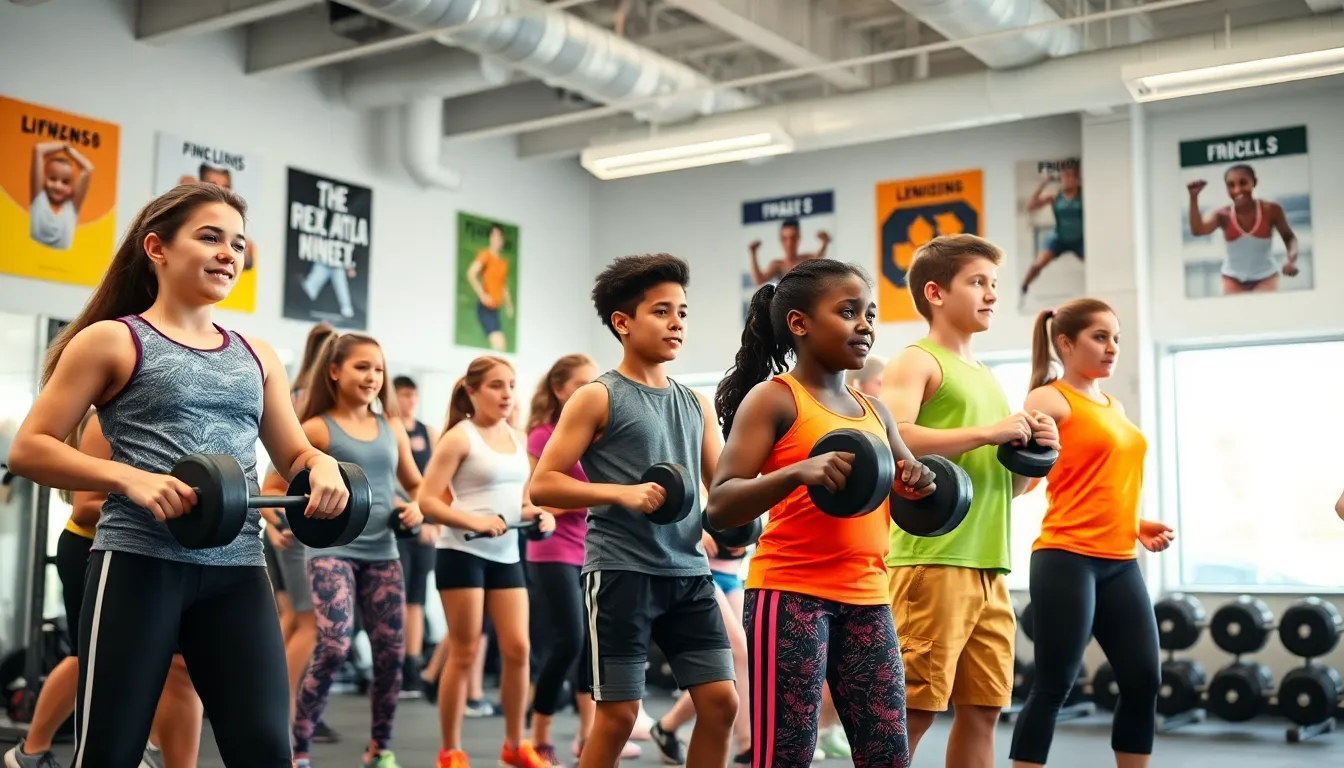When it comes to youth fitness training, many people picture young athletes sweating it out on a field or in a gym. But hold up. It’s not just about building biceps or running laps. Fitness training for kids and teens is essential for their overall development and well-being. Plus, it can be a whole lot of fun.
Imagine your teenager, happily juggling weights and sports equipment, sounds like a far-off fantasy, right? The truth is, youth fitness training isn’t just for those on the track to becoming Olympic stars. It’s about instilling healthy habits that will last a lifetime. Let’s jump into why youth fitness training is more important than ever.
Table of Contents
ToggleThe Importance Of Youth Fitness Training

Physical Benefits
Youth fitness training offers an array of physical benefits that can shape a young person’s future. Engaging in regular exercise helps develop strong muscles and bones, improve cardiovascular health, and enhance flexibility. This foundation can lead to better sports performance and overall physical abilities.
Mental Benefits
But wait, there’s more. Fitness training isn’t just a physical try: it’s a powerful mental booster as well. Exercise releases endorphins, those marvelous chemicals in the brain that promote happiness and reduce stress. Also, regular physical activity can help improve concentration, creativity, and self-esteem, paving the way for academic success.
Social Benefits
Here’s a fun fact, youth fitness training can also be a social game changer. When kids engage in sports and fitness programs, they develop teamwork and communication skills, often forming friendships along the way. Whether they’re winning or losing, these social interactions can teach the value of collaboration and sportsmanship.
Types Of Youth Fitness Training Programs
Individual Sports
Individual sports like swimming, gymnastics, or martial arts focus on personal achievement. Even though they are solo activities, participants often find camaraderie through group classes and competitions. These sports cultivate self-discipline and personal goal setting.
Team Sports
On the flip side, team sports, such as soccer, basketball, or baseball, encourage collaboration and unity. They help young athletes develop a sense of belonging, not to mention critical communication skills. There’s something magical about scoring as a team that fosters lifelong friendships.
Strength Training
Don’t think that strength training is just for adults. Age-appropriate strength training programs can significantly benefit youth by enhancing muscle strength, endurance, and coordination. With the right guidance, it can be a safe and effective way to build confidence.
General Fitness Programs
Finally, general fitness programs offer a broader approach, combining elements from various physical activities. These can include dance, aerobics, or even outdoor activities like hiking. Tailored to cater to all skill levels, these programs encourage exploration and variety.
Guidelines For Safe Training
Age-Appropriate Activities
It’s essential to tailor fitness programs to fit age and developmental stages. Younger children thrive on fun and games that promote movement without the pressure of formal competition. Conversely, older teens may be ready for more structured workouts, advancing to competitive sports or strength training.
Injury Prevention Tips
Safety is key when it comes to youth fitness training. Warm-ups set the stage for more intense activities and help prevent injuries. Teaching proper techniques and encouraging rest between workout sessions can also safeguard against strains and sprains.
Nutrition And Recovery
Importance Of Proper Nutrition
You are what you eat, this age-old saying rings particularly true for young athletes. A balanced diet rich in fruits, vegetables, proteins, and whole grains fuels their performance. Hydration plays a critical role too. Young athletes should drink plenty of water, especially before and after workouts to maintain energy levels and effective recovery.
Recovery Strategies
Recovery isn’t just about kicking back with a bag of chips. It’s crucial for young athletes to understand how to rest their bodies effectively. Incorporating techniques such as stretching, adequate sleep, and cooldown routines can help muscle recovery and reduce fatigue.
Incorporating Fitness Into Daily Life
Creating A Routine
Establishing a fitness routine doesn’t have to feel like pulling teeth. Parents and guardians can help their kids schedule time for workouts, making it a fun family activity. Consistency is vital, and creating a structured plan can help transform exercise into a healthy habit.
Promoting Active Hobbies
Encouraging active hobbies can make all the difference. Beyond traditional sports, consider promoting activities like dance, hiking, or biking. These pursuits make fitness enjoyable and seamless, integrating it into their everyday lives.





